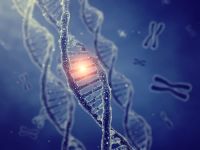Identifying genes and mechanisms underlying the complex phenotypes in multifactorial diseases, such as haematological malignancies, sepsis, malaria, and cardiomyopathies, using high-throughput methods.
|
We focus our research on the identification of: |
GENETIC, GENOMIC, EPIGENOMIC OR PROTEOMIC PROFILES ASSOCIATED WITH THE DISEASE
|
Our interest concerns disease like the Acute Myeloid Leukemia (AML). In this disease, complete remission after chemotherapies is frequently followed by relapse probably due to residual leukemic cells. NK (Natural killer) cells from AML patients have a weak expression of NCRs (Natural Cytotoxicity activating Receptors), thus identifying transcription factors or pathways involved in their tight regulation is a major concern. We are identifying and characterizing these pathways. The Left Ventricular Non-Compaction (LVNC) is a rare genetic cardiomyopathy (CM), with an unknown origin, and characterized by hypertrabeculation in the left ventricle. We assumed that LVNC results from a developmental defect and characterized its pathological evolution by identifying functional defects, fibrosis and molecular pathways in a mouse model. We are characterizing the role of transcription factors and inflammatory pathways found deregulated in this mutant mouse in cardiac defects associated to LVNC. The Chronic Chagas Cardiomyopathy (CCC) is a particularly lethal inflammatory CM that occurs decades after the initial infection. Clinical severity is correlated with the occurrence of myocarditis. We identified 1535 genes in a transcriptomic analysis from CCC patients. We are currently analyzing significantly altered genes with respect to their functions and roles in networks and signaling pathways. Similar approaches will be done in a mouse model. Moreover, we aim at identifying common or rare genetic variants in or around the disease-associated candidate genes. Our interest is also in cardiac inflammatory processes and we will seek the impact of inflammation on cardiac dysfunction in rodent models of sepsis. Cardiotoxicity is a frequent cause of serious morbidity and premature mortality of late effects of cancer therapy. We set up, in collaboration with clinicians from North Hospital (Marseille), to identify cardiotoxicity of cancer therapies by transcriptomic approach in human and in animal models developed in the laboratory. Expected results should provide a better characterization of the signaling pathways affected by the therapeutic agents and lead to the identification of biomarkers. We and others have previously mapped malaria resistance genes and sepsis resistance genes on the human genome based on genome-wide linkage or association analyses. Thus, we are looking for genetic variants that alter molecular phenotypes at the cell level and that may contribute to the pathogenesis. Besides, thanks to several cohorts of patients and in the way to propose new candidates for genetic studies, we are looking for blood gene expression profiles associated with malaria or sepsis by using high-throughput methods. |
Perturbed regulatory elements in pathological conditions
|
SNPs associated with severe malaria or mortality due to sepsis that are located within super-enhancers in monocytes, macrophages, and T or NK lymphocytes are pinpointed and genes regulated by these enhancers containing the SNPs are then characterised in the relevant cell lines using CRISPR/Cas 9 methods and a massive parallel gene reporter assay. Functional disabling of enhancers required for expression of key cancer-related genes is emerging as a major potential oncogenic mechanism. In order to identify and characterize enhancers deregulated in T-lineage acute lymphoblastic leukemia (T-ALL) and potentially involved in leukemogenesis, we combine massive epigenomics data and generate within the European Blueprint consortium along with massive assessment of enhancer activity by CapStarr-seq. Their oncogenic or tumor suppressor properties are studied using CRISPR/Cas9 genetic approaches (Collaboration with V. Asnafi, Necker Hospital, Paris). In CCC patients, correlations between CpG island methylation and gene expression levels are identified. Some gene reporter assays confirm the functional impact of this methylation on expression. We determine whether these results obtained on heart tissue DNAs may be extend to blood extracted DNAs. For the ones where the methylation patterns are confirmed on blood DNAs they may considered as biomarkers. Four hundreds lncRNAs were associated to the disease development and their targets identification is a challenge. |
Perturbed molecular networks causing the disease
|
|
Biomarkers and therapeutic targets allowing to a reliable diagnosis
|
|

 In order to identify molecular profiles associated with multifactorial diseases, we use high throughput methods based on epidemiological, proteomics and transcriptomics approaches in various models (human, rodent, cellular). By transcriptomic analysis, deregulated genes can be sought and epigenomic and genomic studies can be conducted to define profiles or molecules (miRNA, LncRNA) associated to these diseases. Genetic studies are conducted to identify common and rare variants, associated to disease (case control studies and whole exome sequencing).
In order to identify molecular profiles associated with multifactorial diseases, we use high throughput methods based on epidemiological, proteomics and transcriptomics approaches in various models (human, rodent, cellular). By transcriptomic analysis, deregulated genes can be sought and epigenomic and genomic studies can be conducted to define profiles or molecules (miRNA, LncRNA) associated to these diseases. Genetic studies are conducted to identify common and rare variants, associated to disease (case control studies and whole exome sequencing). Our research focus on the identification of regulatory elements such as promoters, enhancers, super-enhancers, transcription factors and regulatory SNPs potentially interfering with gene expression to drive complex diseases. In this purpose, our epigenomics, transcriptomics and genetic data are analysed and integrated together as well as with publicly data. Also, these omics data are deciphered using either available tools or bioinformatics tools developed in the lab (ReMap, RSAT, LedPred, RegVarPred). Furthermore, bioinformatic predictions are tested in relevant in vitro models.
Our research focus on the identification of regulatory elements such as promoters, enhancers, super-enhancers, transcription factors and regulatory SNPs potentially interfering with gene expression to drive complex diseases. In this purpose, our epigenomics, transcriptomics and genetic data are analysed and integrated together as well as with publicly data. Also, these omics data are deciphered using either available tools or bioinformatics tools developed in the lab (ReMap, RSAT, LedPred, RegVarPred). Furthermore, bioinformatic predictions are tested in relevant in vitro models. In order to provide new insights into mechanisms causing or protecting against the disease, we construct molecular networks, including genetic interaction networks, regulatory networks, protein-protein networks; similar methods are used for a physiological trait in a model organism (see Axis 1). This is performed by using either available tools or bioinformatics tools developed in the laboratory (RSAT, LedPred, Interactomebrowser). This should led to a better knowledge of the role of specific cells, such as monocytes, macrophages, lymphocytes, endothelial or muscular cardiac cells, in the outcome of complex diseases. We further evaluate the influence of perturbed regulatory elements on molecular networks by using a logical modelling approach (GinSim). The logical regulatory graphs obtained describe both the interaction between the source gene and the target gene, and the rules of the target activation; the dynamical behaviour of the networks is represented through a state transition graph. Finally, we validate the bioinformatics prediction in experimental models.
In order to provide new insights into mechanisms causing or protecting against the disease, we construct molecular networks, including genetic interaction networks, regulatory networks, protein-protein networks; similar methods are used for a physiological trait in a model organism (see Axis 1). This is performed by using either available tools or bioinformatics tools developed in the laboratory (RSAT, LedPred, Interactomebrowser). This should led to a better knowledge of the role of specific cells, such as monocytes, macrophages, lymphocytes, endothelial or muscular cardiac cells, in the outcome of complex diseases. We further evaluate the influence of perturbed regulatory elements on molecular networks by using a logical modelling approach (GinSim). The logical regulatory graphs obtained describe both the interaction between the source gene and the target gene, and the rules of the target activation; the dynamical behaviour of the networks is represented through a state transition graph. Finally, we validate the bioinformatics prediction in experimental models. Understanding the pathogenesis of complex diseases to the extent that we can effectively prevent, detect, diagnose and treat is an important challenge. Integration of our data lead to the identification of biomarkers that can be used to predict the risk of disease, to improve early detection of disease and diagnostic classification, to better inform individualized treatment, to refine treatment selection and to monitor the outcome of therapeutic interventions. We focused our research on three topics, i.e 1) infection in neutropenic patients, 2) eradication of leukemia stem cell, and 3) defects of innate immunity in leukemia:
Understanding the pathogenesis of complex diseases to the extent that we can effectively prevent, detect, diagnose and treat is an important challenge. Integration of our data lead to the identification of biomarkers that can be used to predict the risk of disease, to improve early detection of disease and diagnostic classification, to better inform individualized treatment, to refine treatment selection and to monitor the outcome of therapeutic interventions. We focused our research on three topics, i.e 1) infection in neutropenic patients, 2) eradication of leukemia stem cell, and 3) defects of innate immunity in leukemia:








